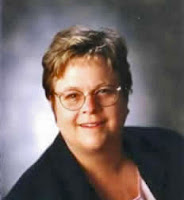 |
| BSU Photo, John Bryant. |
Boise State biologists have uncovered why the chemical defenses in birch, a common type of tree found in North America, are toxic to snowshoe hares.
The snowshoe hare, also commonly called the snowshoe rabbit, is found throughout North America and plays an integral role in the food chain. Understanding the mechanism by which chemical defenses in trees and plants deter snowshoe hares and other herbivores can help explain diet selection and habitat use.
The researchers found that birch inhibits a certain enzyme – succinate dehydrogenase (SDH) – and therefore interferes with cellular energy production. Although it is well documented that the chemicals in birch are harmful to snowshoe hares and other herbivores, the mechanism for toxicity was not known until now.
The study appears online in the Journal of Chemical Ecology and is the first to specifically show how birch’s toxicity affects snowshoe hares.
“If we know diet selection and habitat use, it could lead to better management and conservation of both wildlife and the plants they eat,” said study coauthor Jennifer Forbey, assistant professor of biological sciences. “This work represents a novel discovery and also helps explain the evolution and distribution of chemicals in trees and plants that was made possible by integrating expertise from ecology, pharmacology and chemistry. These chemicals can be toxic to both wildlife and domestic animals and can therefore influence the health of these animals.
To conduct the study, researchers measured the inhibition of SDH isolated from snowshoe hares using in vitro enzyme kinetics studies. They then used computer generated structures of the enzyme and toxin to see if they have the right “shape” to bind together. They confirmed binding of the birch toxin to SDH, which interferes with cellular energy production, showing how birch affects the snowshoe hare.
Also collaborating on the project are Dong Xu, assistant professor of chemistry; Xinzhu Pu, research assistant professor of biology; Knut Kielland, an associate professor at the University of Alaska, Fairbanks; and John Bryant, professor emeritus at the University of Alaska, Fairbanks.


















